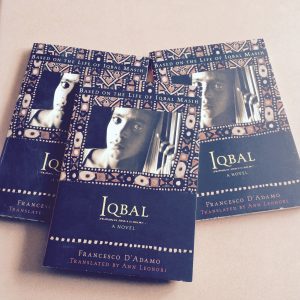Sometimes you have to change your curriculum plans to address the larger classroom issues.
As teachers, there are certain challenging classes that stick in our minds. Mine is a class from several years ago. There were a few particularly challenging students that could throw the entire class into a tailspin. I remember waking up in the middle of the night, getting up, and designing lessons with these students in mind because I was determined to somehow reach this challenging class.
For several years prior to this class, I’d been mulling over the idea of using a particular book that dealt with child labor as a class novel. I had been worried that it might be too much for my sixth graders, and that I’d surely get calls from parents. But now I was really struggling to reach the kids in my current class and to relay the importance of an education.
Connect to the real world and grab the attention of challenging students
It became apparent that I had to connect their education to the real world. The students needed to gain perspective.
So I did it! I used the novel, and I’m so glad that I did.

This is the fictional novel Iqbal. It’s based on a true story of a boy who was sold into child slavery to the carpet industry in Pakistan.
It details how he came to be sold by his family in order to buy medicine for an ailing sibling. From there, we see the daily life of a child slave. From sun up to sun down, we read about his life and the lives of other children in the carpet factory.
The minute we opened the book, the students were hooked. Even the most challenging students were completely drawn in to what life is like for other children. I believe they were humbled. For several weeks, they were able to put themselves into the dark and dusty rooms filled with children as young as four sitting in front of looms, weaving all day long, only to wake up and weave again and again.
Plan how you’ll create success for your challenging students
I strategized how we proceeded through the text. I paired up students, high reader and struggling reader, so there was no way to opt out. Additionally, I began each day reading aloud the chapter(s) to be completed that day. This drew them in, and the transition from my reading to their own reading was seamless.
They were asked to annotate the text, using post-it notes cut into smaller strips. These they’d place on pages of their reading notebook (since we had to share the novels between both of my classes). When we completed our daily reading, each pair would share out their observations and refer back to the novel.
Allow students to act on their concerns
Once we had gained some real-world perspective, students wanted to know about other industries that use children in their labor force. We saw shocking and provoking pictures of kids laboring in brick factories, on cocoa farms, and in garment factories. Students even asked, “So now that we know this, what can we do about it?”
So, we looked at the labels on their clothes and shoes and plotted on a world map where our clothing was made. Then we looked at the locations where child labor was used in garment factories and decided that being aware of our purchases might be one way we can have an impact on childhood labor.
Some wrote letters to companies who sold clothing made in areas known to use children in their labor force.
For about a month that year, the class had transformed into students who forgot their own angst, their old idea of what education meant, and they recognized the opportunities they had that millions of other kids lacked. They were able to see that school was meaningful and a stepping stone to help on their journey through life.
Refer back to student successes
I continued to remind them of the Iqbal story throughout that year. It helped us make it to June, and I can only hope that they are able to reflect back on their experience of gaining some perspective on their daily lives in our little corner of the world.
When writing about a novel or short story, I love to use this step-by-step format for analyzing literature. I developed it with scaffolding built in so that all students can find success.

There’s a sample essay and tips for the teacher on the challenges we face in teaching literary analysis. You can reading this blog post on writing a literary analysis.
I have often considered using the novel Iqbal as a literature circle selection. I’d love to find other novels about real-life experiences of children who face challenging situations in their daily life, so if you have recommendations, please leave a comment. Find my literature circle packet here with everything you’ll need to run successful book clubs. Get more information on literature circles by reading this series of blog posts.
I’m teaming up with some amazing authors. Check out their posts.




I love this unit of study, but especially the real world connection to where their own clothing has come from, and how their lives as students and children are vastly different from children around the world. Also loved how this became a reference point throughout the year, drawing them back to their experience with this novel unit. Great to be a student in your caring and connected classroom!
This is such an important subject for many teachers. We’ve all had challenging classes. Your ideas are right on. Thanks for sharing.
Thanks, Deann. We’ve all had our share of challenging classes. It’s great to know that we can find
success in the midst of challenge.
Thanks, Deann. Challenging classes are a reality. Finding success in this setting is crucial for students and teachers alike.
What a beautiful classroom success story. Very inspiring!